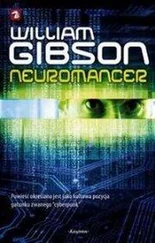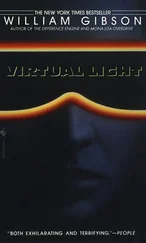eBay is a cross between a swap meet in cyberspace and a country auction with computer-driven proxy bidding. The auctioneer is one of eBay’s servers.
Buyers don’t pay anything to eBay; they just pay sellers for the items they buy. Sellers, however, pay a fee on each item they list, and another fee if it sells. You can set this up so that your eBay seller’s account comes off your credit card. I doubt if anyone’s seller account amounts to much in a given month, but eBay moves a lot of items.
There’s a sense of taking part in an evolving system, here. I suspect that eBay is evolving in much the way the Net did.
I started visiting eBay just as user IDs were coming in. You can opt to do business on eBay under a handle. I think that this was introduced in order to foil spam-miners, who were sending bots into eBay to scoop up e-mail addresses. And I actually did get spam, my very first, after my initial foray into eBay. But then I got a user ID and the spam stopped.
Looking over the Announcement Board recently, I saw that eBay now requires credit card information before allowing users into such categories as firearms and X-rated adult material: an age-checking strategy.
One thing I can imagine changing on eBay is the current requirement that sellers who want to display scans of their items find an off-site page on which to host their HTML. eBay links to tutorials on how to do this, but it’s just enough of a learning curve to discourage some people. Myself included. If it were possible to send a scan directly to eBay, I think selling would take a major step toward becoming a ubiquitous activity.
I find clutter, in my personal environment, oppressive. But crazed environments of dead tech and poignant rubbish turn up in my fiction on a regular basis, where they are usually presented as being at once comforting, evocative, and somehow magical. The future as flea market. I really do tend to see the future that way, though not exclusively.
My first impulse, when presented with any spanking-new piece of computer hardware, is to imagine how it will look in ten years’ time, gathering dust under a card table in a thrift shop. And it probably will.
The pleasure afforded by browsing eBay is the pleasure afforded by any flea market or garage sale. Something ruminative, but with an underlying acuity, as though some old hunter-gatherer module were activated. It’s a lot like beachcombing.
Where eBay departs the traditional pleasure of a flea market, though, is in its sheer scale and its searchability. If you can think of a thing, you can search it on eBay. And, very probably, you can find it.
If randomness is what you’re after, though, there are ways to surf eBay, rather than search it. Modes of sheer drift. Every item offers you a chance to peruse Seller’s Other Auctions, which can take you off into categories of merchandise you wouldn’t have thought of. A search for Hopi silver, for instance, brought up other kinds of Native American artifacts, much older ones, so that a series of clicks through stone adzes and Clovis points led to an obscure monograph on mound-excavation in Florida in the 1930s.
But it was the watches that kept me coming back.
And I started to get sniped.
I’d find a watch I wanted, work my way up to high-bidder position, check my position regularly (eBay regularly informs you of your bidding status, and outbid notices arrive promptly, but it’s still fun to check), and find, as the auction ran off, that I’d been zapped, in the last five minutes of bidding, by someone offering just one increment more than I had bid. I began to smell a rat.
The nature of the rat became apparent when I started checking out “Dutch” (multiple buyer) auctions of eBay-specific software, and discovered that one could buy plug-ins that automated the bidding process.
This bothered me. I thought about it. It bothered me more.
The idea of this software ran entirely counter to the peculiar psychology of bidding at auction. The software-driven sniper isn’t really bidding; he’s shopping. Skimming an existing situation. The sniper (or his software package) is able to look at the final minutes of any auction as a done deal, then decide whether or not to purchase that item at the fixed price, plus one bid increment. Which pissed me off, and took some of the fun away.
A friend’s hacker boyfriend, in Chicago, offered to write me a piece of software that would outsnipe anything on the market. Tempting, but not very. Instead, I sent eBay a message to the effect that allowing autobid software detracted from the eBay experience. That it spoiled the chemistry of the thing, which in my view was a large part of what they offered as a venue. I also suspected, though I couldn’t think of a convincing way to put it, that sufficient proliferation of sniping software could eventually, theoretically, bring the whole community to a halt.
I got no reply, and I hadn’t expected to, but the problem seems in the meantime to have been resolved. Entirely to my satisfaction, and in a way that illustrates exactly how things have a way of finding their own uses for the street.
Text of a message sent to all vendors of third-party bidding software at eBay, 8/13/98:
eBay bid system change: Yesterday, through the help of an eBay user, we detected and disarmed a “bid bot” which had placed bids on hundreds of items. A bid bot is a program which bids on many items or the same item over and over again. Our SafeHarbour team is tracking down the source of the bot, and will be working with our lawyers and the authorities to take appropriate action. In an effort to prevent this type of system attack in the future, eBay plans to make an internal change to the bidding process. Most of you will not notice this change. It will NOT affect the interface you use at all. All bidding processes will remain the same as they were before. Unfortunately, the change may disable most, if not all “automated bidding programs” [aka, sniping programs]. We apologize for this, but it’s important that we make eBay safe from robots of this kind.
I’d love to know what that bot was bidding on. Beanie Babies, probably. (A follow-up message partially reversed course: eBay would not outlaw bid bots, but would require that they conform to sign-on procedures.)
With a level playing field restored, I decided to kick this eBay watch-buying habit in the head.
Addictive personality that I am, I decided that the best way to do that was to binge: to do a whole bunch of it at one time and get it out of my system. To that end, I decided to buy a couple of fairly serious watches. Keepers.
I bid on, and won, a late-1940s Jaeger two-register chronograph in Hong Kong. The idea of sending a check off to Causeway Bay for more than a thousand dollars to someone I’d never heard of, let alone met, seemed to be stretching it a little. But Eric So, a B Tech (Mech) at the Hong Kong Water Supplies Department and an avid watch fancier, was so evidently honest, so helpful, and responded to e-mail so readily, that I soon had no reservations whatever. Once the check had cleared, the Jaeger arrived with blinding speed and was even nicer than described.
And I did have one authentic auction-frisson over the Jaeger when, very near the end of the auction, someone bidding “by hand” topped me. This gentleman, when I checked his profile, appeared to be a European collector of some seriousness. After I bid again, I waited nervously, but he never came back.
My other binge watch was a Vulcain Cricket, an alarm watch introduced in the late Forties, which sounds like a very large, very mechanical cricket. I wanted one of these because the older ones look terrific, and because “Vulcain Cricket” is one of the finest pieces of found poetry I’ve ever stumbled across.
I found the best one I’d ever seen, offered by Vince and Laura, of Good Timing, who, by virtue of tagging all their items “(GOOD TIMING),” have built themselves the equivalent of a stall in cyberspace. Most sellers’ goods on eBay are spread, as it were, on the same huge blanket, but Vince and Laura’s tag allows them an edge in rep-building.
Читать дальше










